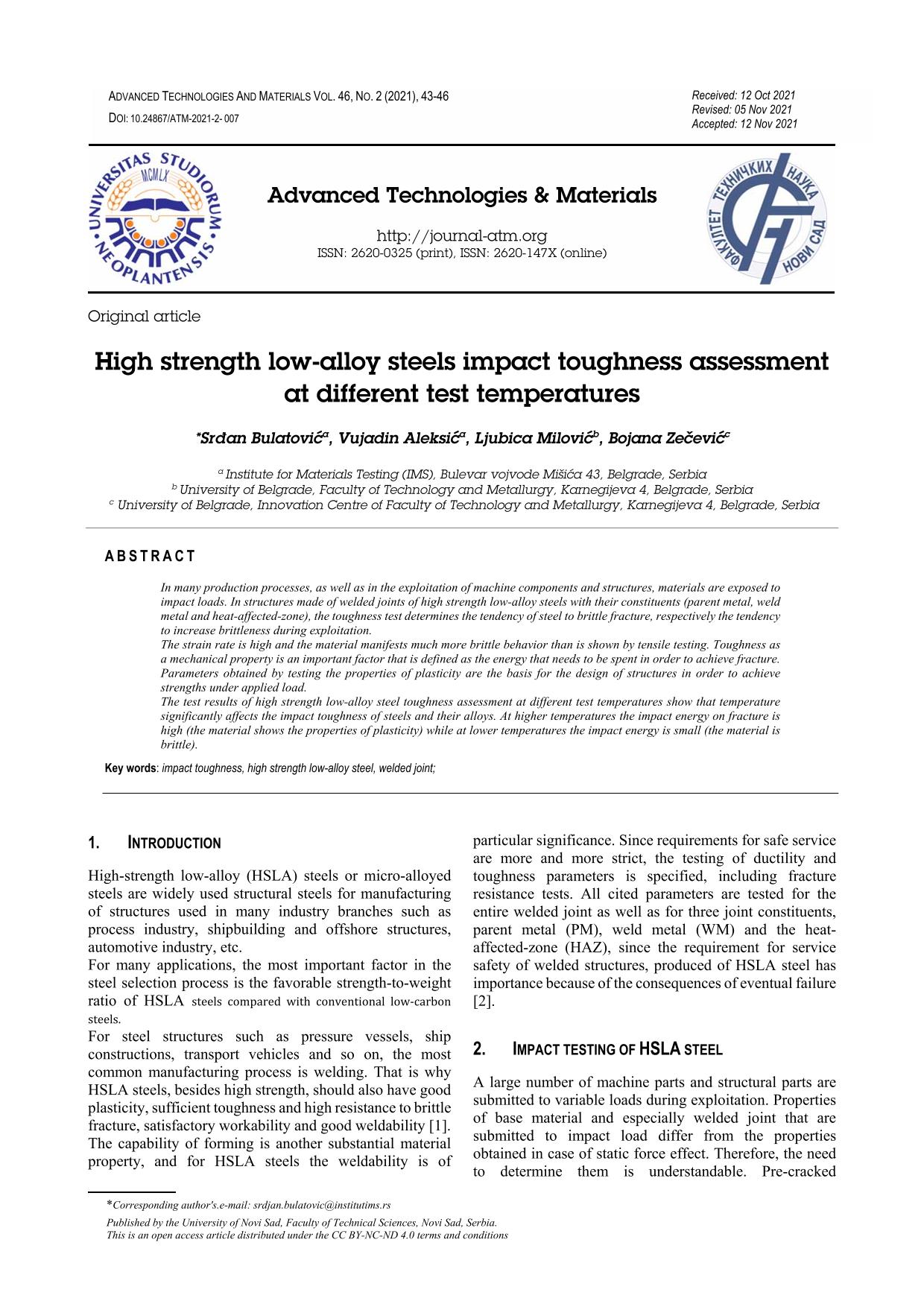High strength low-alloy steels impact toughness assessment at different test temperatures

Published 2021-12-01
abstract views: 34 // Full text article (PDF): 22
Keywords
- impact toughness,
- high strength low-alloy steel,
- welded joint
How to Cite

This work is licensed under a Creative Commons Attribution 4.0 International License.
Abstract
In many production processes, as well as in the exploitation of machine components and structures, materials are exposed to impact loads. In structures made of welded joints of high strength low-alloy steels with their constituents (parent metal, weld metal and heat-affected-zone), the toughness test determines the tendency of steel to brittle fracture, respectively the tendency to increase brittleness during exploitation.
The strain rate is high and the material manifests much more brittle behavior than is shown by tensile testing. Toughness as a mechanical property is an important factor that is defined as the energy that needs to be spent in order to achieve fracture. Parameters obtained by testing the properties of plasticity are the basis for the design of structures in order to achieve strengths under applied load.
The test results of high strength low-alloy steel toughness assessment at different test temperatures show that temperature significantly affects the impact toughness of steels and their alloys. At higher temperatures the impact energy on fracture is high (the material shows the properties of plasticity) while at lower temperatures the impact energy is small (the material is brittle).

